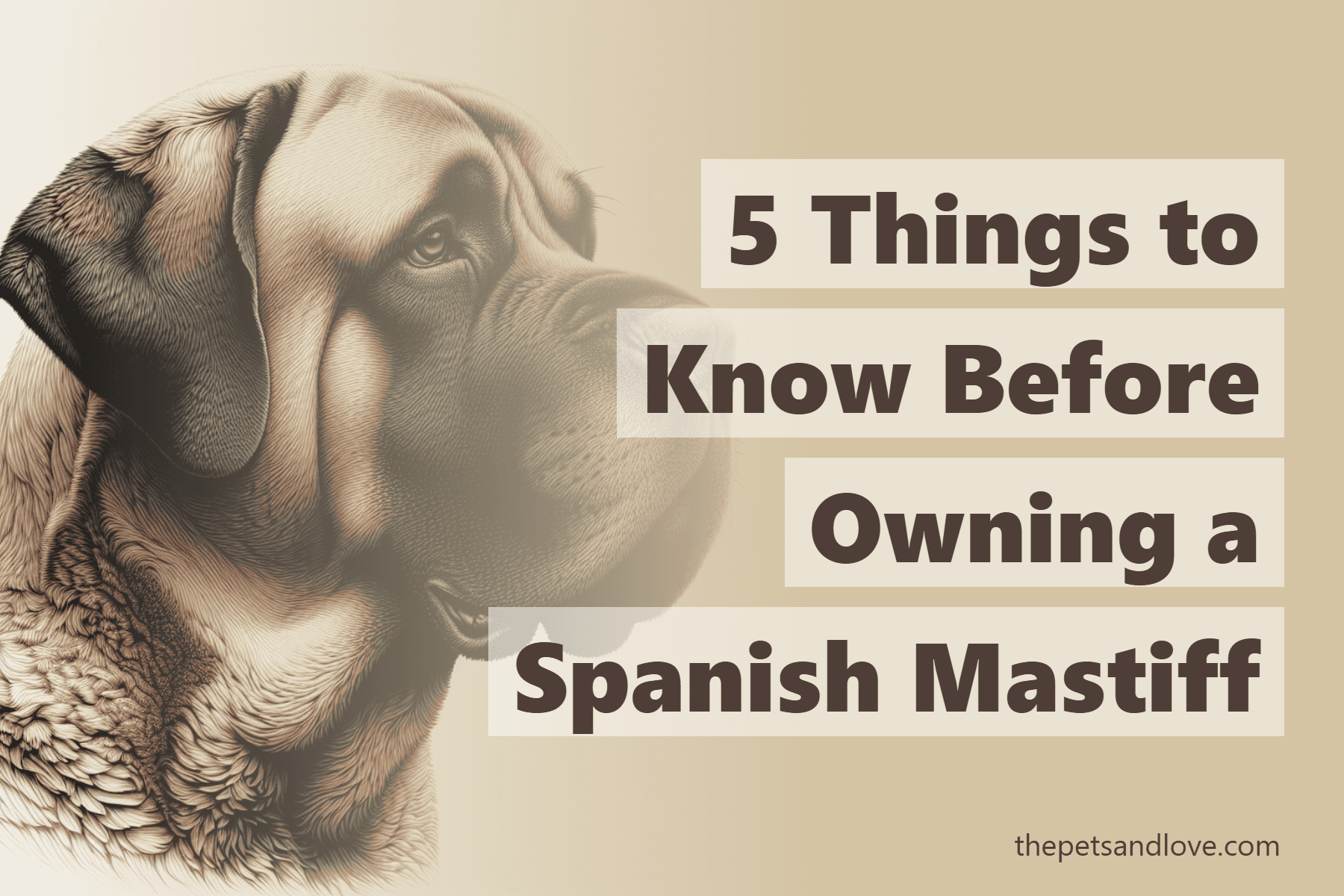5 Things to Know Before Owning a Spanish Mastiff

Thinking about bringing home a Spanish Mastiff? These giant, noble dogs can be amazing protectors and deeply loyal companions — but they’re definitely not for everyone.
We’ve spent time around big working breeds like these, and trust me, they’re not your average house dog. If you’ve never owned a dog before or aren’t up for a firm leadership role, this probably isn’t your match. But if you have experience with large, independent dogs and are ready for the challenge — read on.
What It’s Really Like Living With a Spanish Mastiff
1. Big Dog, Big Responsibility
The Spanish Mastiff is a true giant — males can tip the scale at over 200 pounds. Their sheer size can be overwhelming, especially in homes with small kids, elderly folks, or tight spaces. These dogs need room to stretch out, ideally a big yard, and they just don’t fit well into apartment life.
2. Calm, But Not Lazy
Despite their size, they’re surprisingly mellow indoors. They’re not zooming around all day, but they still need a good amount of exercise. A slow-paced daily walk and time to roam in a fenced yard is usually enough. Just don’t expect them to be couch potatoes 24/7.
3. Guarding Instincts Run Deep
These dogs were bred to protect — they’re naturally suspicious of strangers and have a booming bark that’ll make anyone think twice about coming near your property. That protectiveness can be a huge asset, but it also means early and consistent socialization is essential. Otherwise, they can become overly territorial or even aggressive.
4. Training Takes Patience (and Confidence)
Spanish Mastiffs are smart, but also stubborn and independent. They’re not eager-to-please retrievers — they think for themselves. You’ll need to be calm, consistent, and firm without being harsh. Positive reinforcement works best (especially with treats), and training should start early. An untrained adult Mastiff is incredibly hard to manage.
5. Not a Fan of Strangers — Or Other Pets
They’re loyal to their family but aloof with outsiders. Some Spanish Mastiffs can get along with other pets if raised with them, but many don’t tolerate other dogs or cats well. Socialization from puppyhood helps, but if you’ve got a multi-pet household, introducing a Spanish Mastiff might be tricky.
6. Health and Grooming Needs
Like many giant breeds, they’re prone to hip and joint issues. Keep their weight in check, don’t over-exercise young puppies, and make sure they’re getting proper nutrition. They shed seasonally and drool a lot — especially after eating or drinking. Having a towel nearby is just part of the daily routine.
Their thick coat protects them from cold weather, but they can overheat easily in the summer. Always provide shade and water if they’re outside on hot days.
7. Not Hypoallergenic
If allergies are a concern, this breed isn’t for you. They shed heavily during certain seasons and aren’t allergy-friendly.
8. Gentle With Kids — But Supervised Play Only
Spanish Mastiffs are generally very protective of children in their own families. But due to their sheer size, playtime should always be supervised. They can accidentally knock over a toddler without even realizing it.
In a Nutshell: Is the Spanish Mastiff Right for You?
This breed is loving, loyal, and incredibly brave — but they need an experienced owner who understands large, independent dogs. They’re not ideal for first-time dog owners, small homes, or people looking for a low-maintenance pup.
But if you’ve got the space, time, and confidence to raise and train a giant working dog, a Spanish Mastiff can be a devoted family guardian. They’ll watch over your home with quiet strength, and their calm presence can be incredibly grounding — just be prepared for the drool. Always the drool.
If you're still on the fence, consider spending time with one before committing — it’s the best way to know if this gentle giant is your kind of dog.
Take the Quiz
Is a Spanish Mastiff Right for You?
The Spanish Mastiff is a large and protective breed known for its loyalty and calm demeanor. Take the quiz to see if this gentle giant fits your lifestyle! Answer all questions below to discover your compatibility score and get personalized insights.
Question #1: What is the main reason you want a dog?
Question #2: How active is your lifestyle?
Question #3: How much time can you dedicate to your dog daily?
Question #4: What best describes your home environment?
Question #5: What size dog do you prefer?
Question #6: What personality traits do you want in your dog?
Question #7: How much grooming can you handle?
Question #8: Who else lives with the dog?
Question #9: Is this your first dog?
Please answer all 9 questions to see your results
